Abstract
Leaf elongation rate (LER) in grasses is dependent on epidermal cell supply (number) and on rate and duration of epidermal cell elongation. Nitrogen (N) fertilization increases LER. Longitudinal sections from two genotypes of tall fescue (Festuca arundinacea Schreb.), which differ by 50% in LER, were used to quantify the effects of N on the components of epidermal cell elongation and on mesophyll cell division. Rate and duration of epidermal cell elongation were determined by using a relationship between cell length and displacement velocity derived from the continuity equation. Rate of epidermal cell elongation was exponential. Relative rates of epidermal cell elongation increased by 9% with high N, even though high N increased LER by 89%. Duration of cell elongation was approximately 20 h longer in the high- than in the low-LER genotype regardless of N treatment. The percentage of mesophyll cells in division was greater in the high- than in the low-LER genotype. This increased with high N in both genotypes, indicating that LER increased with cell supply. Division of mesophyll cells adjacent to abaxial epidermal cells continued after epidermal cell division stopped, until epidermal cells had elongated to a mean length of 40 micrometers in the high-LER and a mean length of 50 micrometers in the low-LER genotype. The cell cycle length for mesophyll cells was calculated to be 12 to 13 hours. Nitrogen increased mesophyll cell number more than epidermal cell number: in both genotypes, the final number of mesophyll cells adjacent to each abaxial epidermal cell was 10 with low N and 14 with high N. A spatial model is used to describe three cell development processes relevant to leaf growth. It illustrates the overlap of mesophyll cell division and epidermal cell elongation, and the transition from epidermal cell elongation to secondary cell wall deposition.
Full text
PDF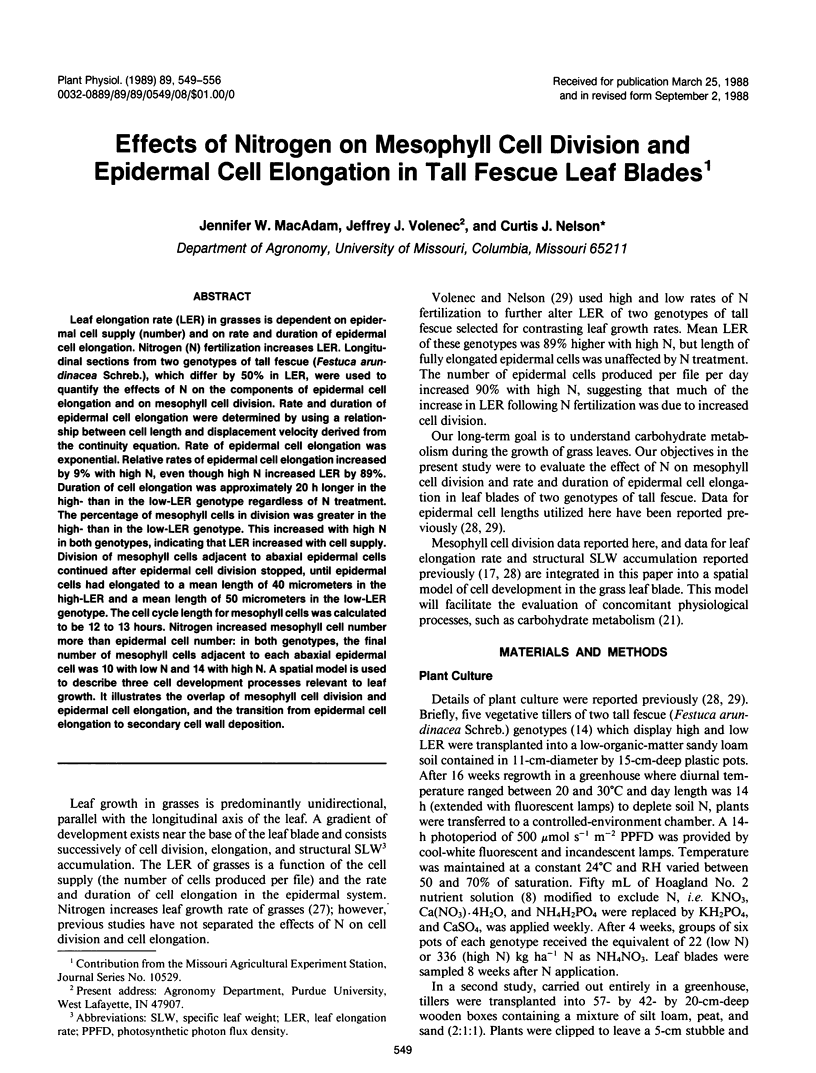
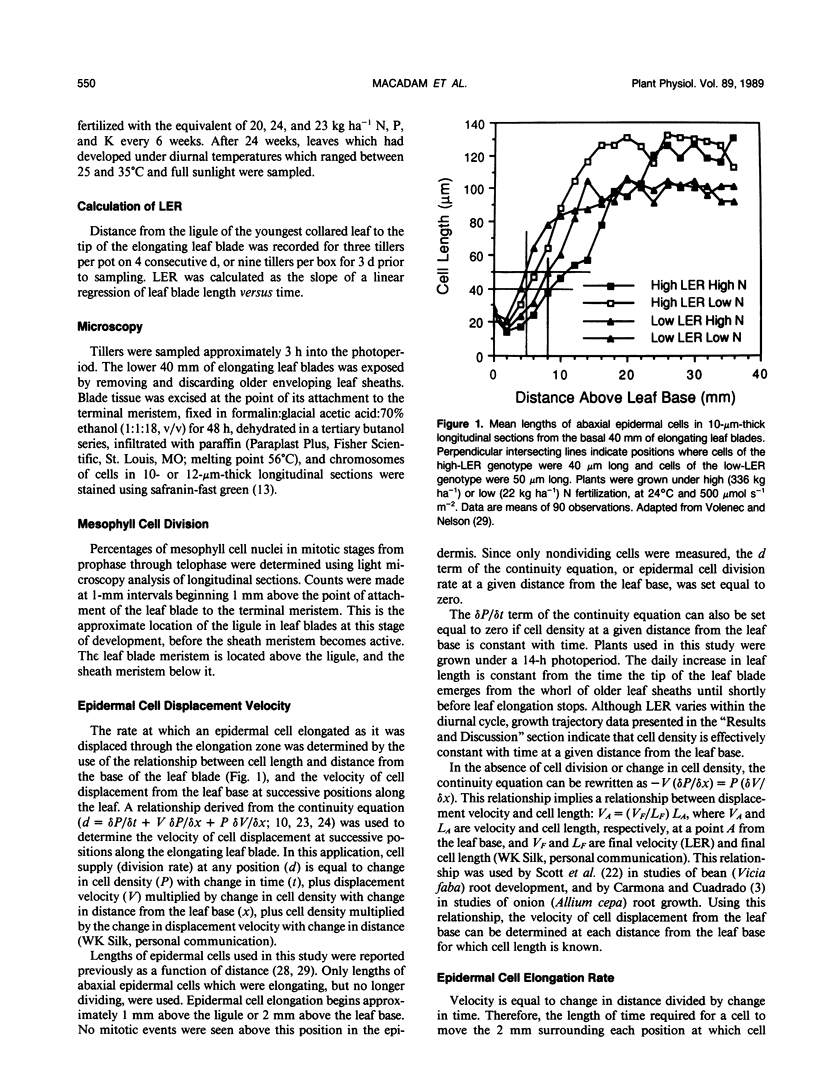
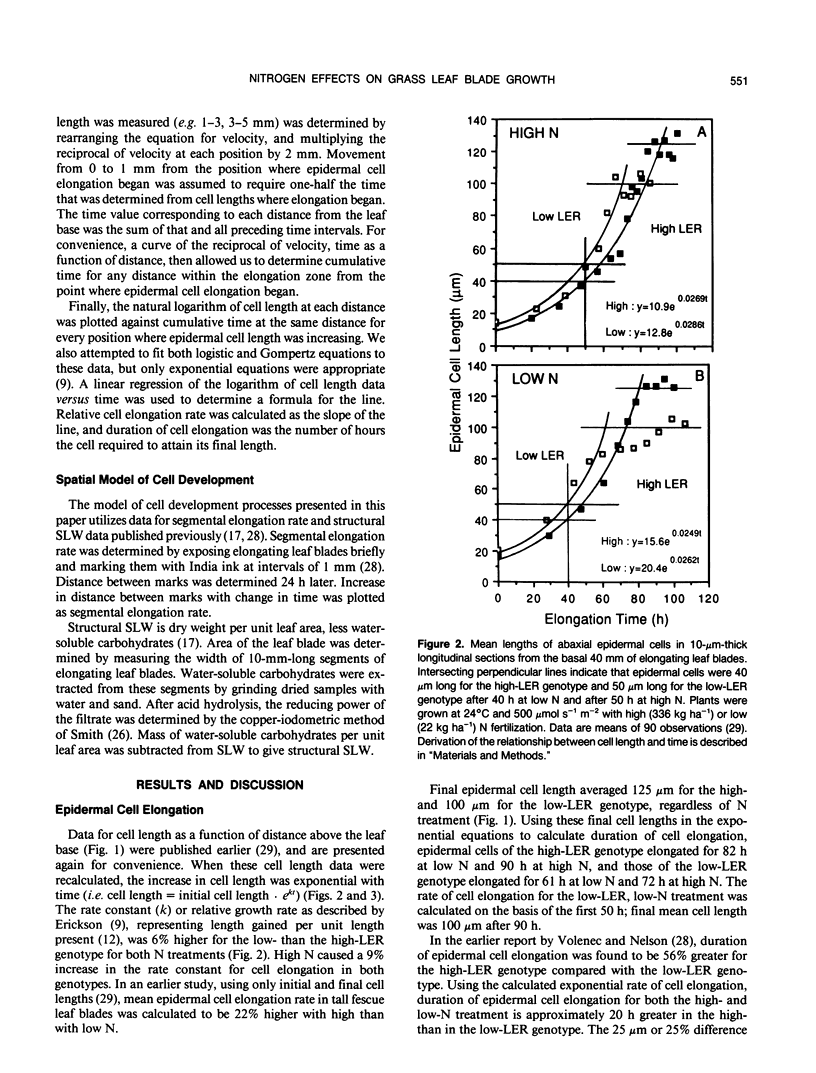
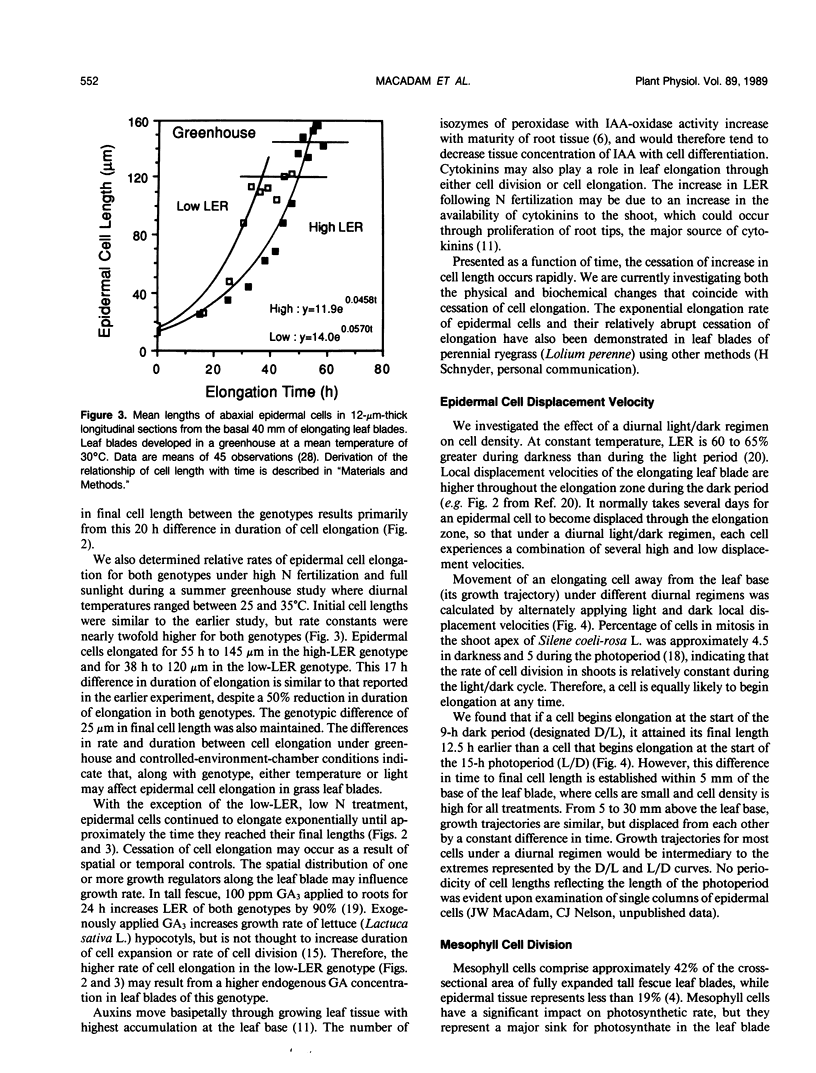
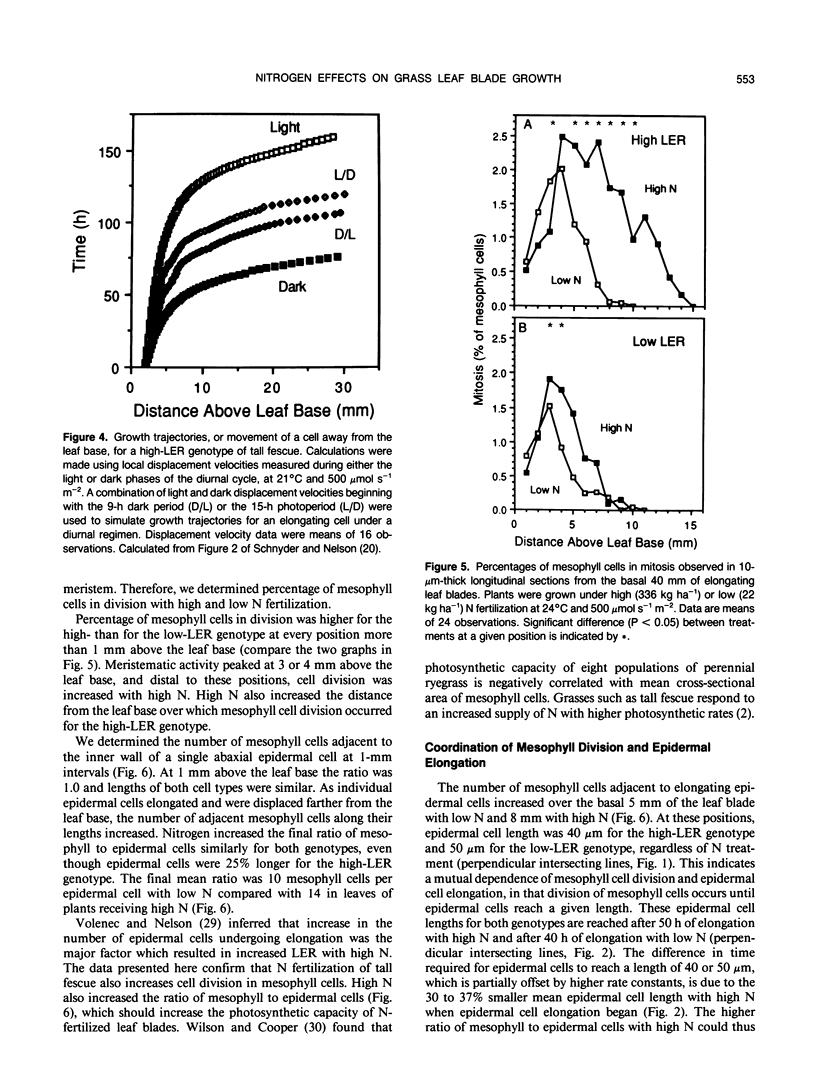
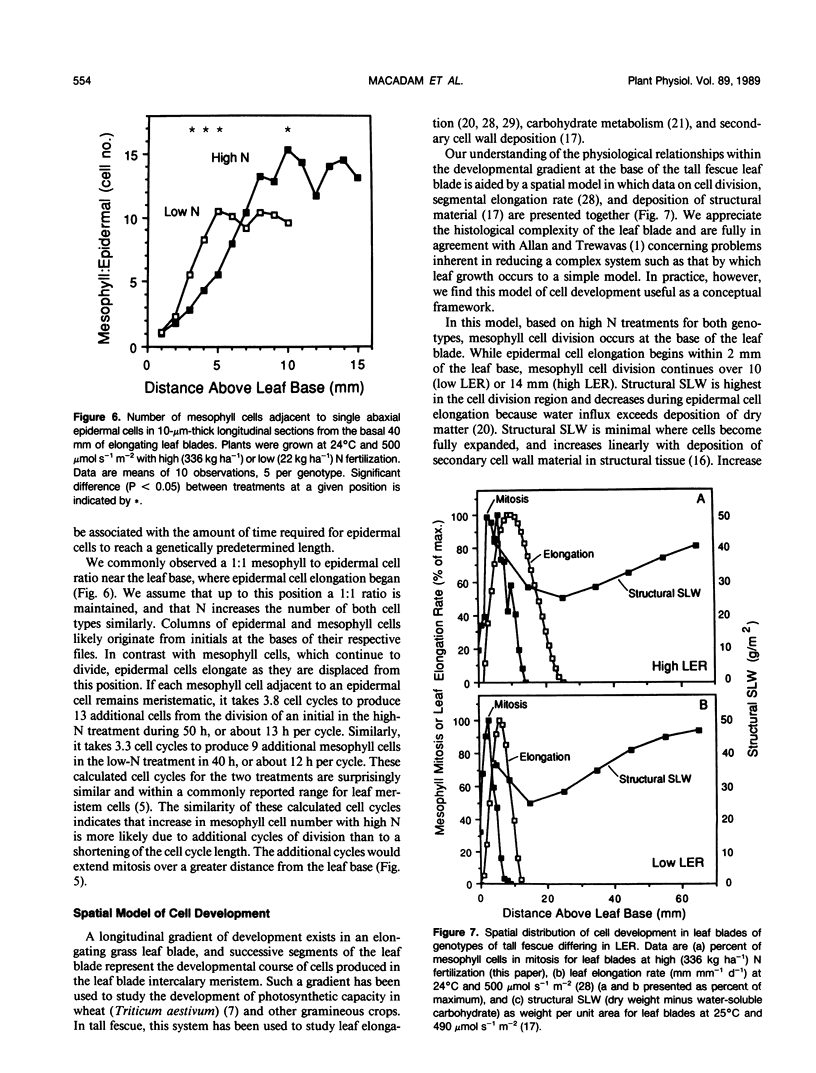
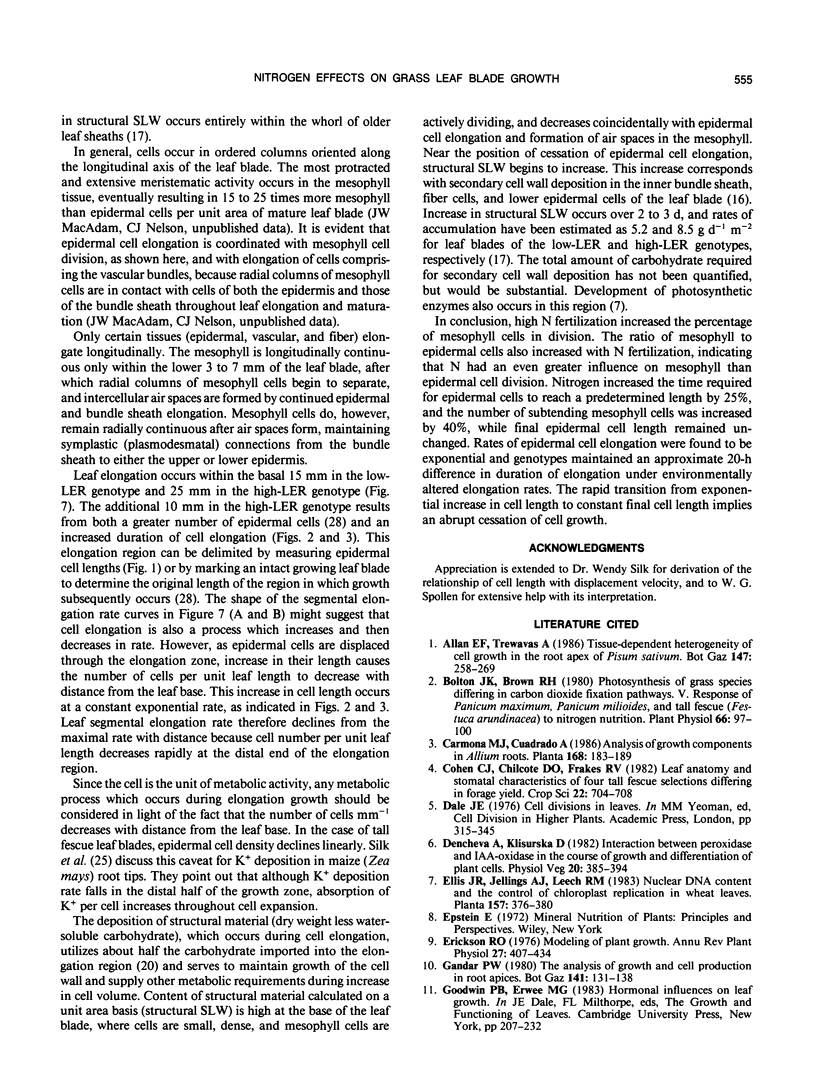
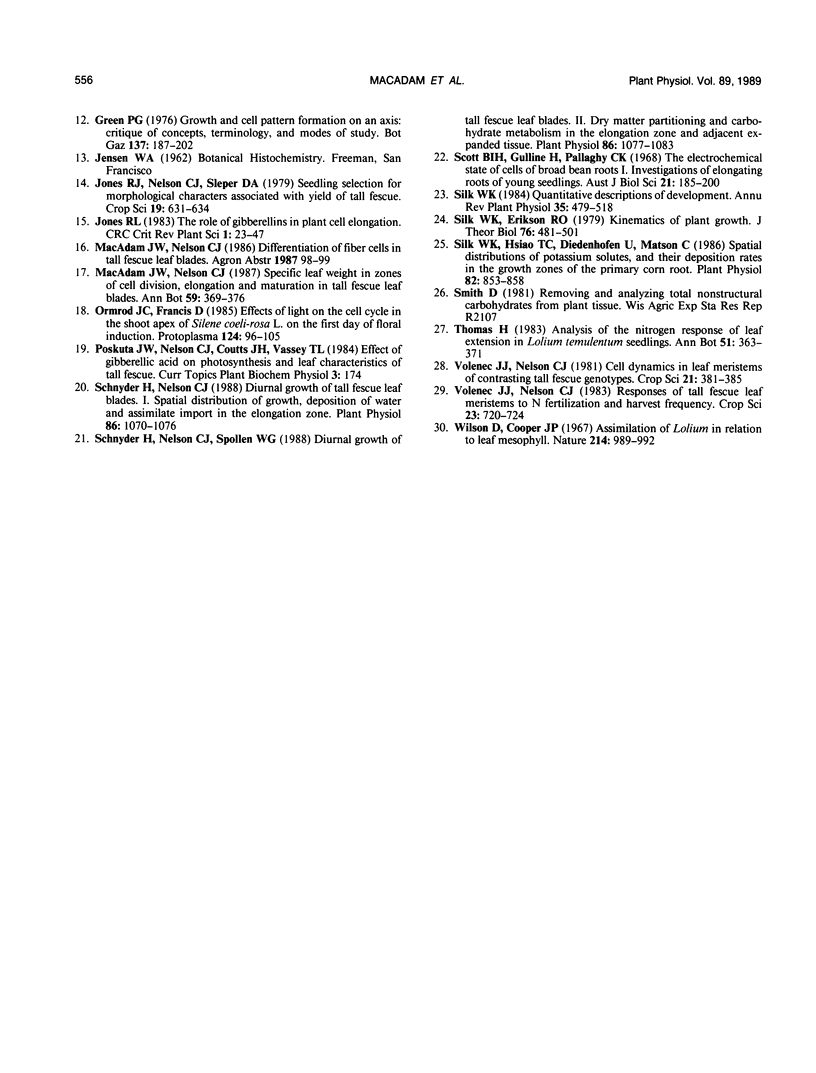
Selected References
These references are in PubMed. This may not be the complete list of references from this article.
- Bolton J. K., Brown R. H. Photosynthesis of Grass Species Differing in Carbon Dioxide Fixation Pathways: V. RESPONSE OF PANICUM MAXIMUM, PANICUM MILIOIDES, AND TALL FESCUE (FESTUCA ARUNDINACEA) TO NITROGEN NUTRITION. Plant Physiol. 1980 Jul;66(1):97–100. doi: 10.1104/pp.66.1.97. [DOI] [PMC free article] [PubMed] [Google Scholar]
- Schnyder H., Nelson C. J. Diurnal growth of tall fescue leaf blades : I. Spatial distribution of growth, deposition of water, and assimilate import in the elongation zone. Plant Physiol. 1988 Apr;86(4):1070–1076. doi: 10.1104/pp.86.4.1070. [DOI] [PMC free article] [PubMed] [Google Scholar]
- Schnyder H., Nelson C. J., Spollen W. G. Diurnal Growth of Tall Fescue Leaf Blades : II. Dry Matter Partitioning and Carbohydrate Metabolism in the Elongation Zone and Adjacent Expanded Tissue. Plant Physiol. 1988 Apr;86(4):1077–1083. doi: 10.1104/pp.86.4.1077. [DOI] [PMC free article] [PubMed] [Google Scholar]
- Silk W. K., Erickson R. O. Kinematics of plant growth. J Theor Biol. 1979 Feb 21;76(4):481–501. doi: 10.1016/0022-5193(79)90014-6. [DOI] [PubMed] [Google Scholar]
- Silk W. K., Hsiao T. C., Diedenhofen U., Matson C. Spatial distributions of potassium, solutes, and their deposition rates in the growth zone of the primary corn root. Plant Physiol. 1986 Nov;82(3):853–858. doi: 10.1104/pp.82.3.853. [DOI] [PMC free article] [PubMed] [Google Scholar]


